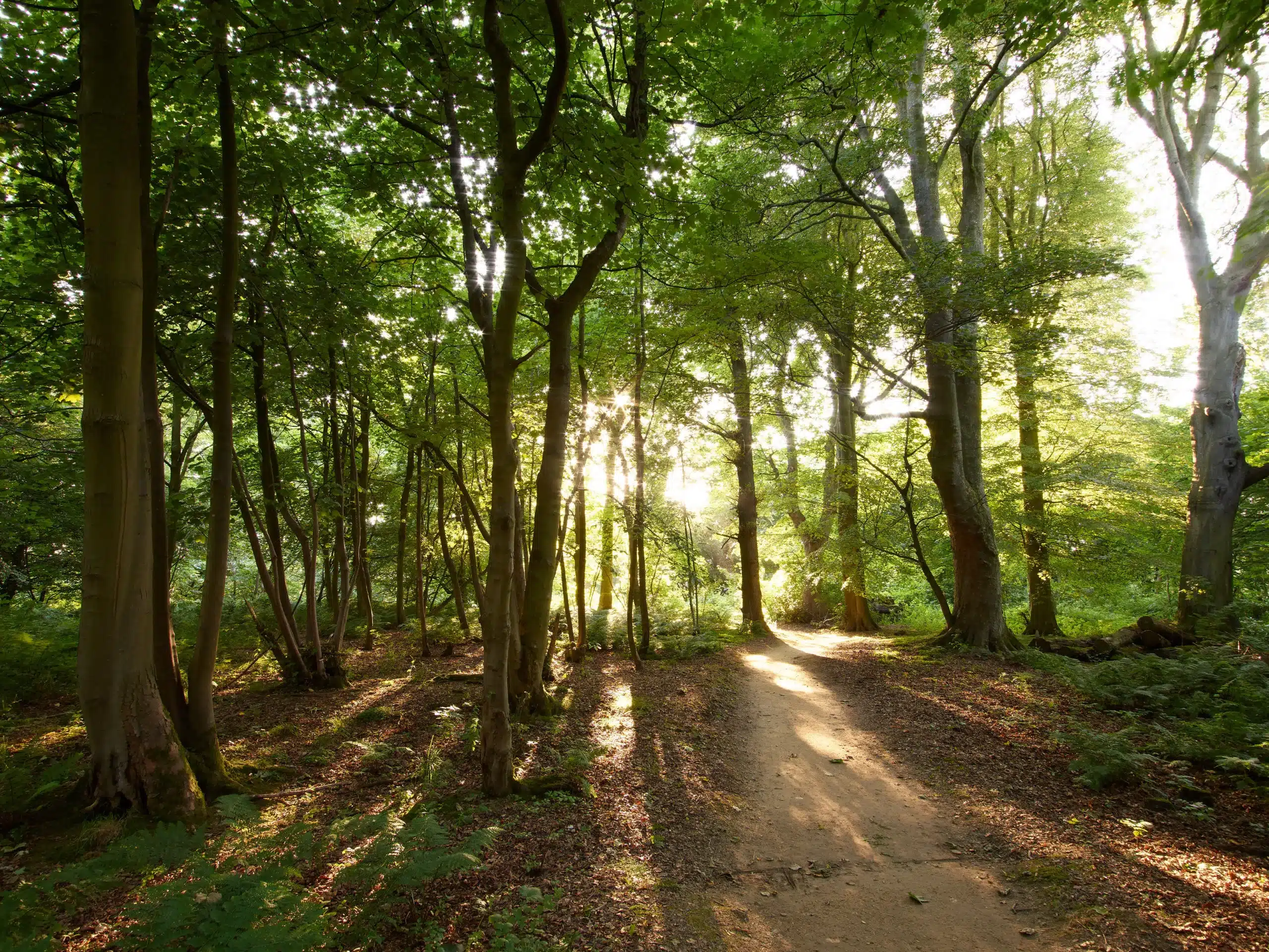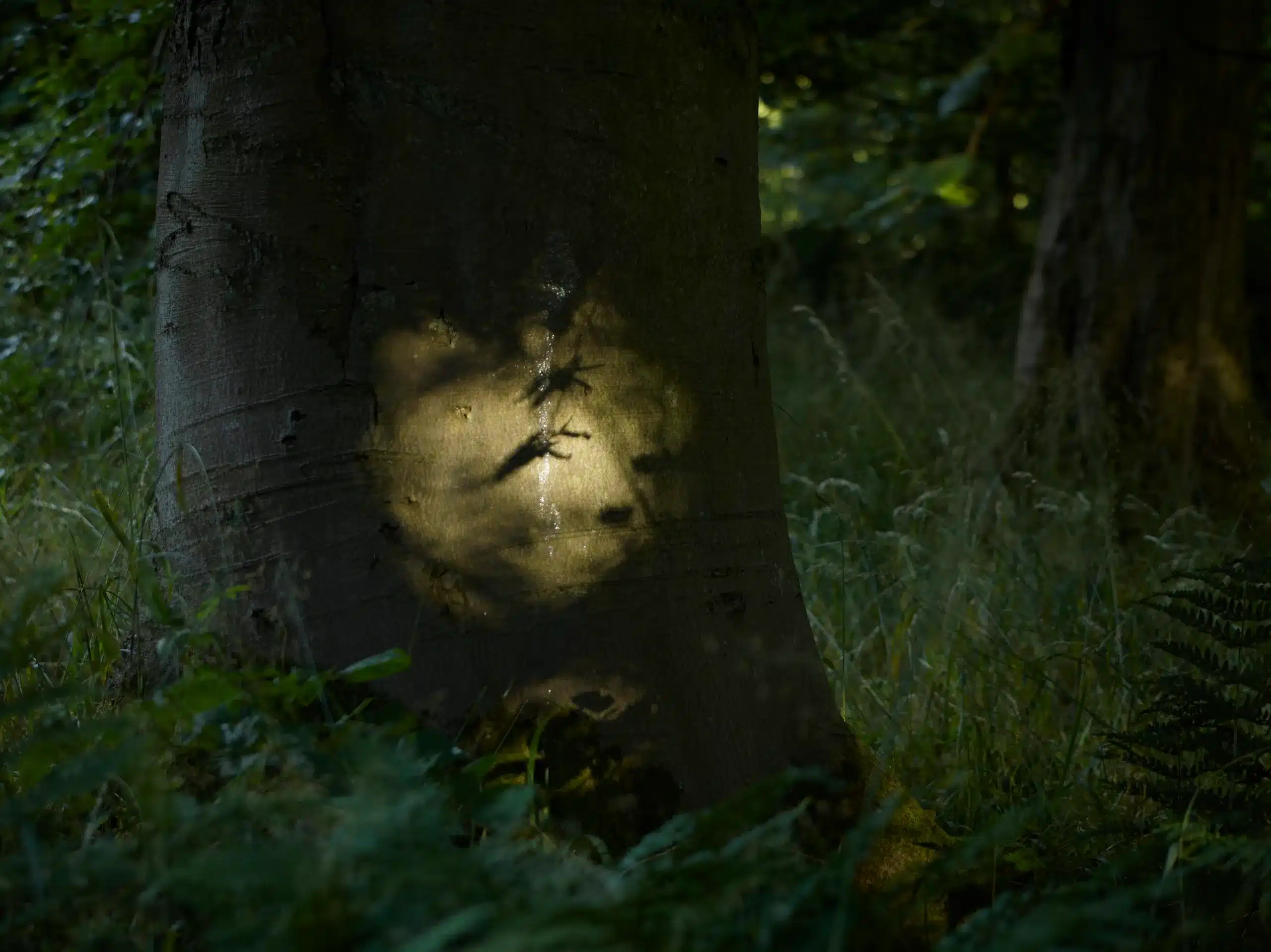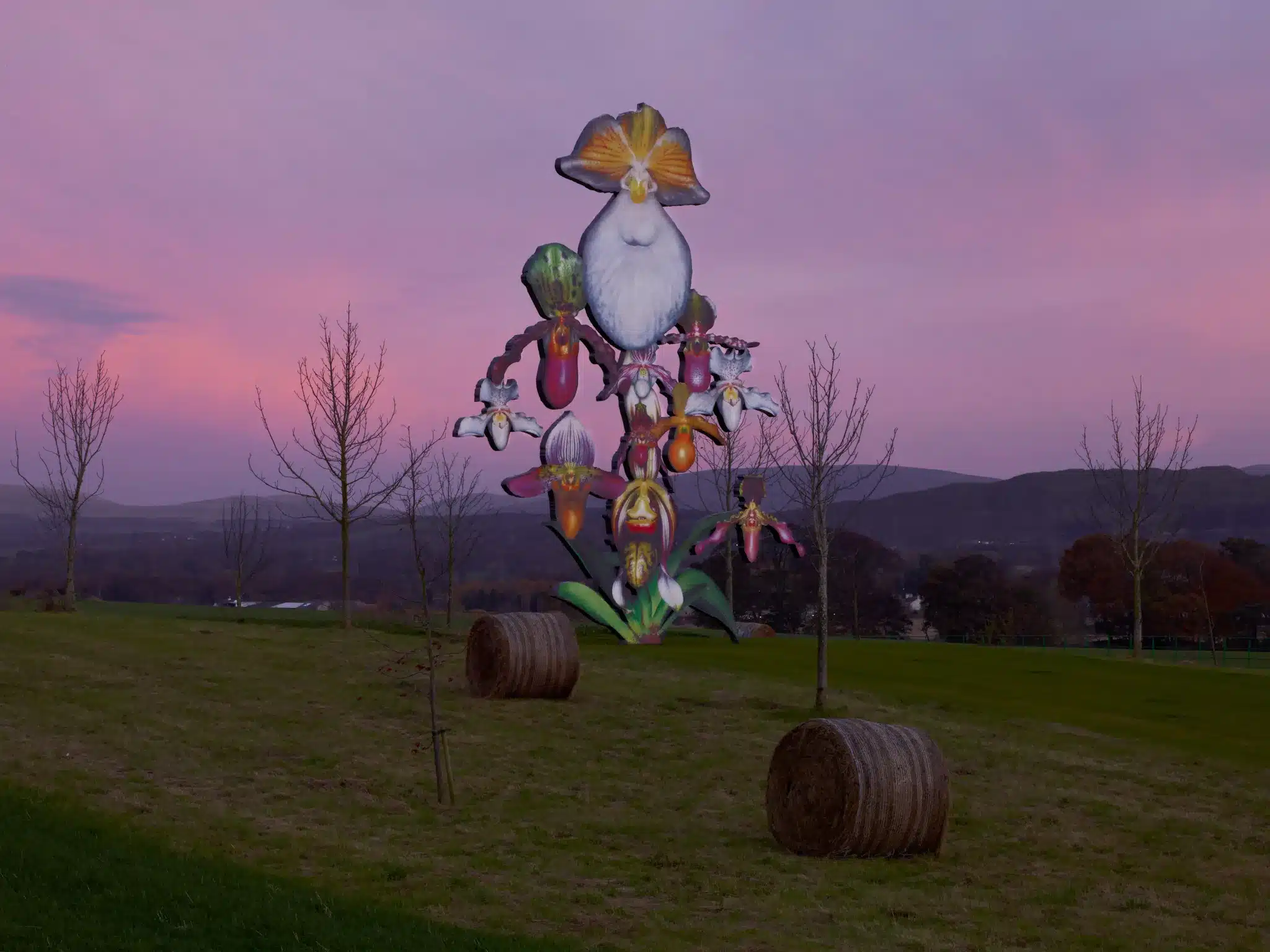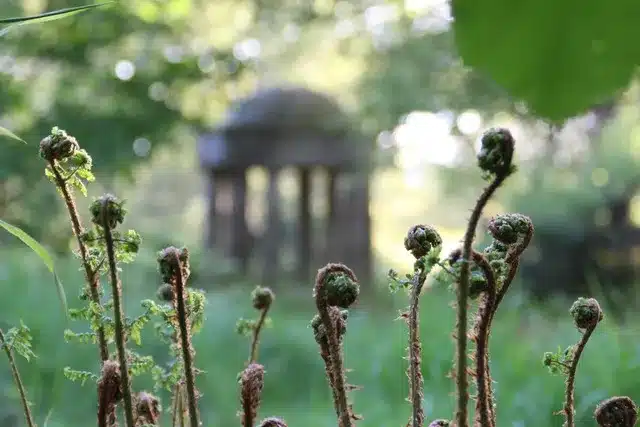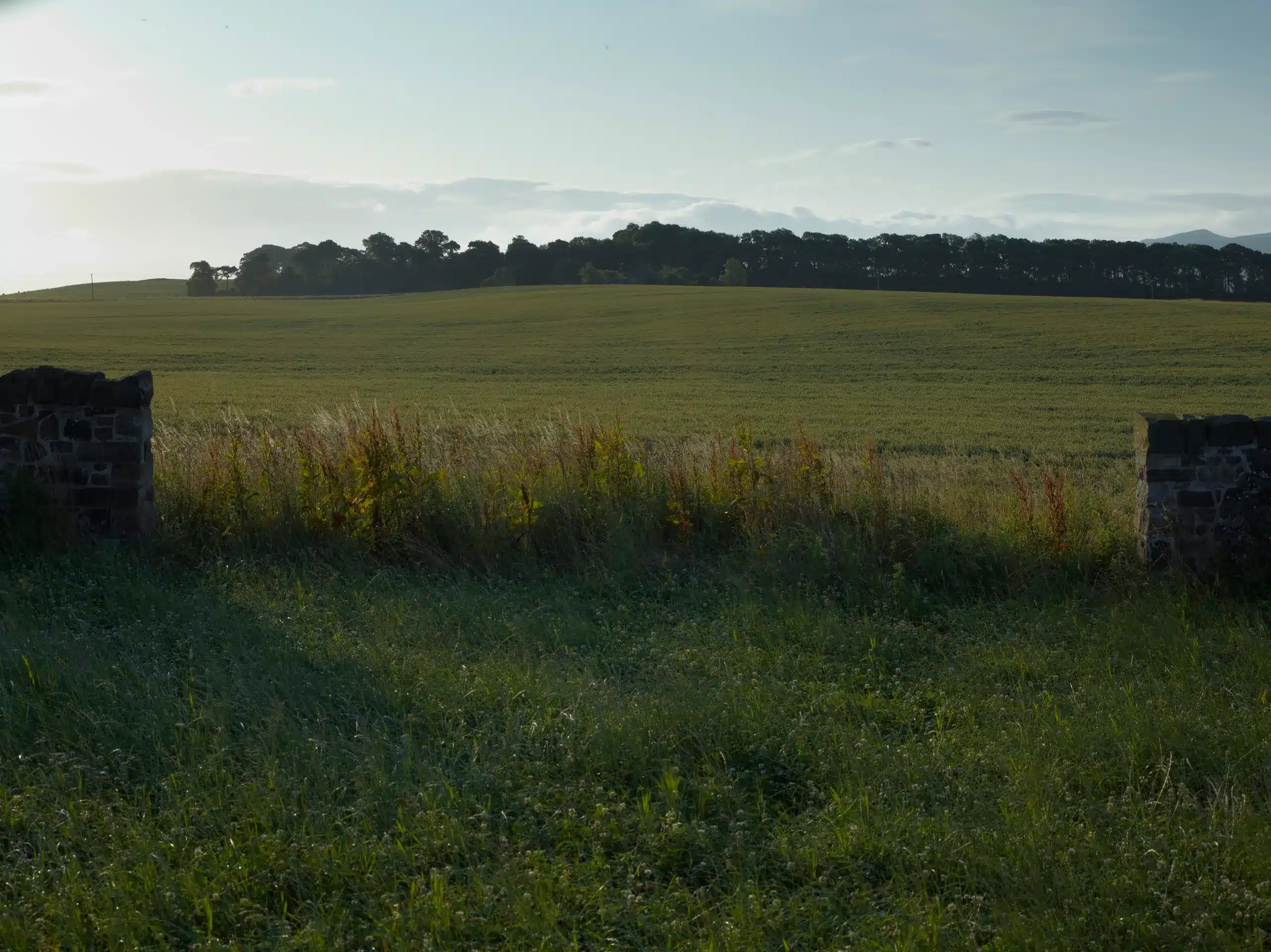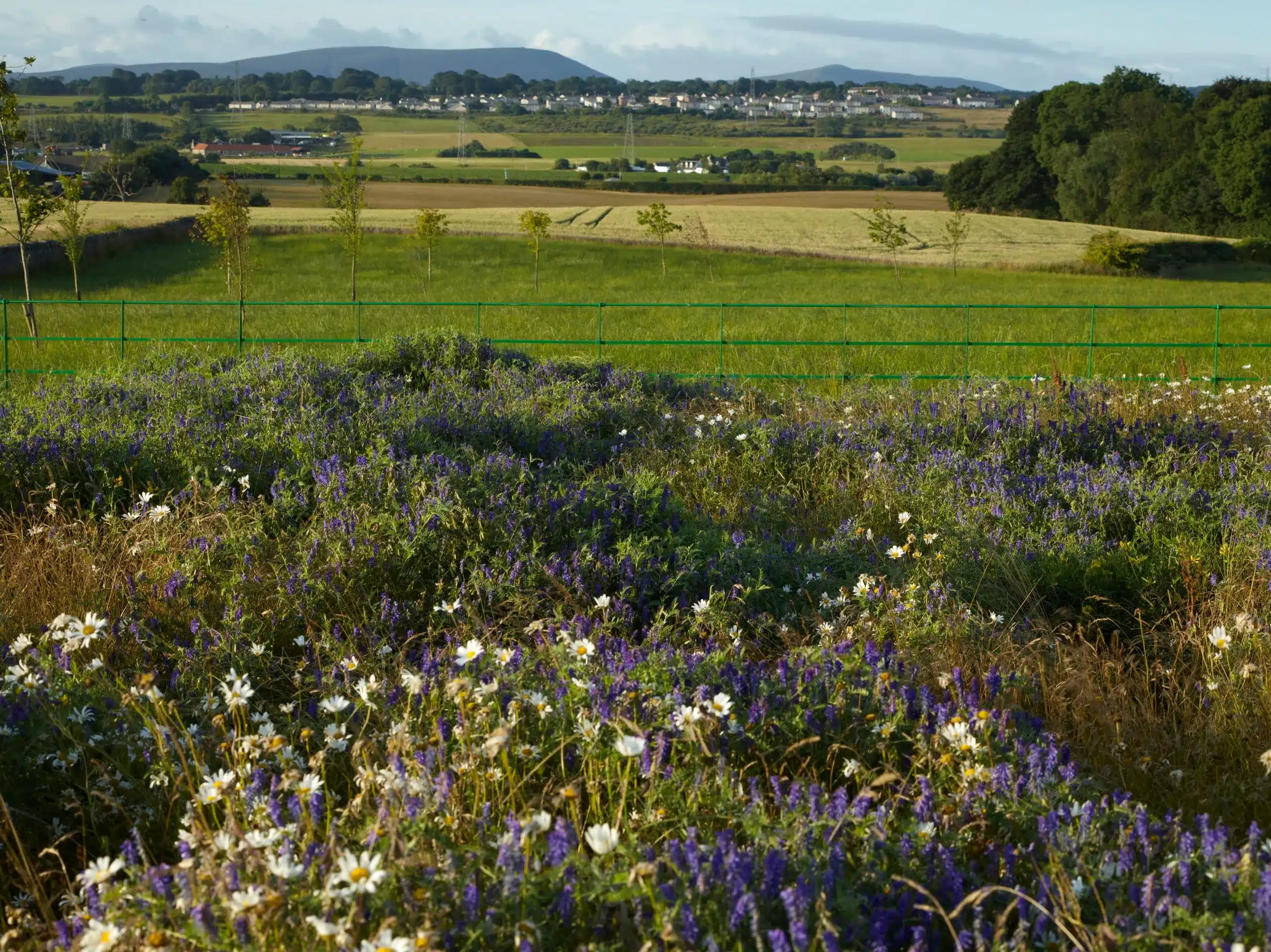Landscape
Landscape
The first recorded survey of the topography surrounding Jupiter was in 1750, by Sir General Roy. His map sketches an extensive formal landscape with avenues of forest flaring out from a central axis, and at its heart, Bonnington House, the Jacobean manor house that sits at the heart of the park today. These grounds were predominately used for hunting and enjoyed views of the wider landscape of Midlothian and the Pentlands beyond, and yet it is this same landscape that now inspires and facilitates the work of the artists whom visit Jupiter Artland.
To the North we can see the famously listed Table Mountain, the soft red smudge of the Greendyke Shale Bing in the foreground, and in the distance, the hulking angular masses of the 3 Bridges over the Firth of Forth, and the Ochil Hills. To the South we can watch the weather come in, continuously changing and shifting as it moves slowly over the Pentland hills. Jupiter sits amidst the rugged post-industrial landscape of West Lothian – a county once nicknamed the Texas of the North because of its affluent paraffin mines – its carefully maintained green spaces existing both in contrast and conversation with its surroundings.
More Images
This dichotomy is evocative of a tension inherent in the landscape; as Seamus Heaney wrote in A Sense of Place (1977), ‘I think there are two ways in which a place is known and cherished, two ways which may be complimentary but which are just as likely to be antipathetic. One is lived illiterate and unconscious, the other, learned, literate and conscious’. Jupiter resolves this tension, the ‘learned’ artifice of the sculpture operating in rich symbiosis with the power of the ‘unconscious’ landscape; it is from this that the artists draw the inspiration for their site-specific and often original work.
This diverse landscape has had successive changes in ownership and occupancy varying from the Moonies or Children of God to David Murray International headquarters, meaning that large swathes of land have been sold at various points, reducing the landscape to the policies immediately surrounding the Jacobean revival House. The land is slowly being restored and the very center is now home to the Wilson family.
Much of the landscape that now belongs to Jupiter has been reclaimed from fertile arable farmland, and since the discovery of a buried Ha-ha, in 2003, there has been a sustained design project initially inspired by Peter Daniels of Livingston New Town designed landscape fame. The long-term development plan for Jupiter is to nurture the already verdant landscape, increasing the diversity of tree species and cultivars. Many of our magnificent trees within the policies are at the peak of their lives and we are keeping a close eye on them to make sure they are safe and can be with us as long as possible. To this end we are working closely with The Royal Botanic Gardens and private collectors of rare and endangered species to maintain the livelihood of the landscape. By creating a system of shelter belts that will both protect viewpoints and play with the geomancy of a landscape that is so latent with the ‘unconscious’ power of Heaney’s words, we can ensure its continued vitality and quietly inspirational qualities.
At the heart of this developing landscape is the inexplicable force that connects the unconscious speech of the landscape with the literate vision of artists. This powerful pull has inspired artists to notice small things that the casual viewer may not, but often great work is based upon the study of maps, research of papers, stories, anecdotes – the ephemeral legends that much Jupiter such a rich and vital place – but, most importantly, from listening to the landscape.
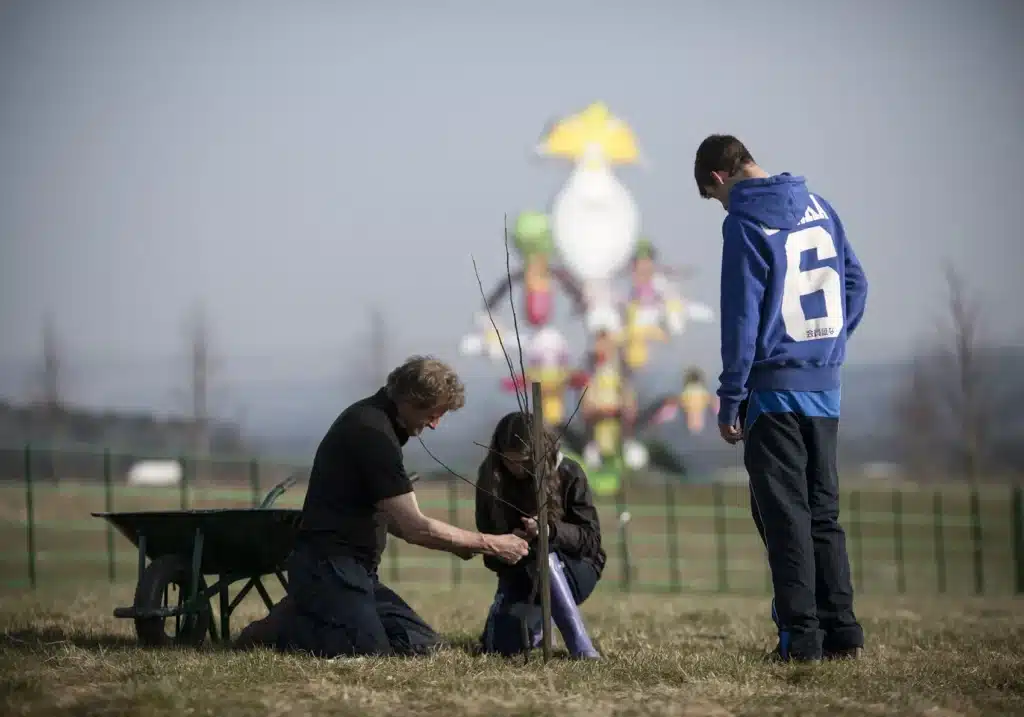
Volunteer with us
Jupiter is cared for by a small and dedicated team of gardeners, supported by volunteers, who help us for a few hours a week or stay in our purpose -built cabin to fully immerse themselves in the landscape. Our wildflower meadows across the landscape are establishing with the help of volunteers collecting seeds and removing weeds and we are increasingly counting more and more birds and insects in our environment. That’s just one way that our volunteers get involved.
